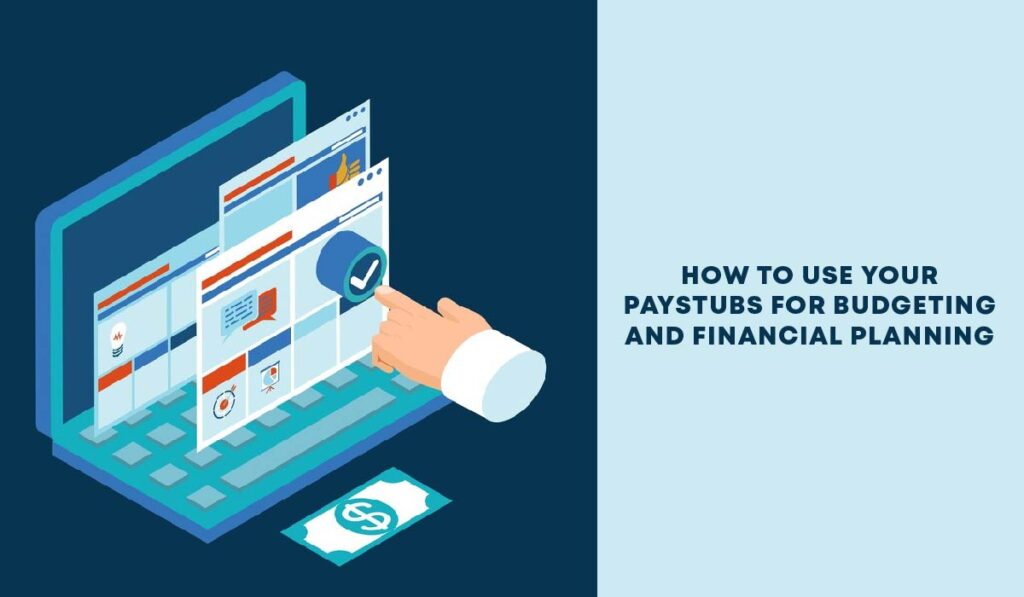Your paystub is more than just a summary of your earnings—it’s a powerful financial tool that can help you budget effectively and achieve your financial goals. By learning how to read and analyze your paystub, you can gain a clearer understanding of your income, expenses, and savings potential. Here’s how you can leverage your paystub for smarter budgeting and financial planning.
1. Understand Your Paystub Components
Before diving into budgeting, it’s essential to understand the key elements of your paystub. A pay stub generator can also help ensure you have an accurate and organized record of your income. Most paystubs include:
- Gross Pay: The total amount you earned before taxes and deductions.
- Net Pay: The amount you take home after deductions.
- Taxes Withheld: Federal, state, and local taxes deducted from your paycheck.
- Deductions: Includes health insurance premiums, retirement contributions, and other benefits.
- Year-to-Date (YTD) Totals: Cumulative amounts for earnings, taxes, and deductions for the year so far.
Take a moment to familiarize yourself with these sections, as they form the foundation for your budgeting efforts.
2. Calculate Your True Income
Your gross pay doesn’t reflect what you can spend. To create an accurate budget, focus on your net pay (take-home pay). If you’re paid biweekly, multiply your net pay by 26 and divide by 12 to estimate your monthly income. For hourly workers, account for fluctuations due to overtime or inconsistent hours.
Knowing your true income ensures that your budget aligns with what’s actually available to you.
3. Track Your Deductions
Paystubs highlight deductions that might impact your financial planning, such as:
- Retirement Contributions: Understand how much you’re contributing to a 401(k) or other retirement plans. If you’re not meeting employer match thresholds, consider increasing your contribution.
- Health Insurance: Review premiums to ensure you’re on the most cost-effective plan.
- Other Benefits: Look for deductions for life insurance, flexible spending accounts, or employee assistance programs. Evaluate whether these align with your needs.
By monitoring deductions, you can ensure your benefits are optimized and adjust as needed.
4. Use Year-to-Date (YTD) Totals for Big-Picture Planning
YTD totals provide insight into your overall earnings, taxes paid, and savings contributions for the year. Use this information to:
- Assess whether you’re withholding too much or too little in taxes. If you consistently receive large tax refunds, consider adjusting your W-4 form to increase your take-home pay.
- Set benchmarks for savings and investments. For example, if your YTD retirement contributions are below target, you may need to allocate more funds in the remaining months of the year.
5. Create a Budget Based on Your Paystub
Now that you’ve analyzed your paystub, use it as the basis for a budget. Follow these steps:
a. Categorize Your Expenses
Break your spending into categories such as housing, utilities, groceries, transportation, savings, and discretionary spending. Allocate a percentage of your net income to each category. A common rule of thumb is the 50/30/20 rule:
- 50% for needs (e.g., rent, utilities, groceries)
- 30% for wants (e.g., dining out, entertainment)
- 20% for savings and debt repayment
b. Account for Irregular Income
If your pay varies, base your budget on your average monthly income or the lowest amount you expect to earn in a given month. This approach helps you avoid overspending during leaner periods.
c. Automate Your Savings
Use your paystub to determine how much you can set aside for savings. If your employer offers direct deposit, consider splitting your paycheck so a portion goes directly into a savings or investment account.
6. Plan for Taxes and Refunds
Your paystub provides a detailed breakdown of taxes withheld, which can help you prepare for tax season. If you’re self-employed or have side gigs, review your paystub to estimate your total tax liability and set aside money for quarterly payments.
7. Monitor Your Financial Progress
Regularly reviewing your paystub allows you to:
- Track increases in income, such as raises or bonuses.
- Verify the accuracy of deductions and correct errors promptly.
- Adjust your budget as your financial situation changes.
8. Leverage Paystub Data for Long-Term Goals
Your paystub is an excellent starting point for setting long-term financial goals, such as:
- Saving for a house, car, or vacation
- Paying off student loans or credit card debt
- Building an emergency fund
- Growing your retirement savings
Use the insights from your paystub to identify areas where you can cut expenses or increase contributions toward these goals.
Conclusion
Your paystub isn’t just a record of your earnings—it’s a roadmap to financial success. By understanding its components and using the information to create a detailed budget, you can take control of your finances, make informed decisions, and achieve your long-term goals. Take the time to review your paystub regularly, and watch as your financial confidence grows.
